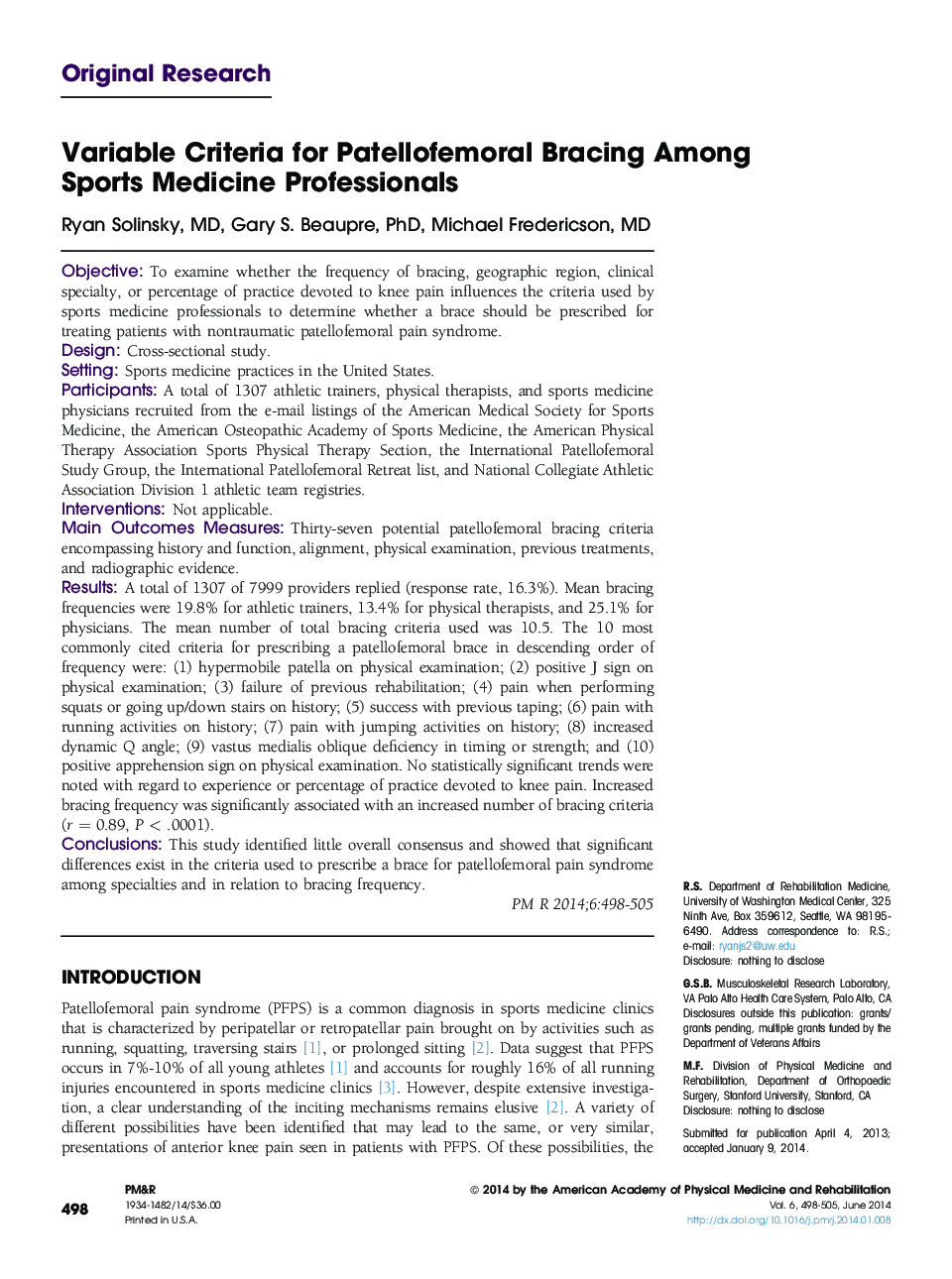| Article ID | Journal | Published Year | Pages | File Type |
|---|---|---|---|---|
| 2705620 | PM&R | 2014 | 8 Pages |
ObjectiveTo examine whether the frequency of bracing, geographic region, clinical specialty, or percentage of practice devoted to knee pain influences the criteria used by sports medicine professionals to determine whether a brace should be prescribed for treating patients with nontraumatic patellofemoral pain syndrome.DesignCross-sectional study.SettingSports medicine practices in the United States.ParticipantsA total of 1307 athletic trainers, physical therapists, and sports medicine physicians recruited from the e-mail listings of the American Medical Society for Sports Medicine, the American Osteopathic Academy of Sports Medicine, the American Physical Therapy Association Sports Physical Therapy Section, the International Patellofemoral Study Group, the International Patellofemoral Retreat list, and National Collegiate Athletic Association Division 1 athletic team registries.InterventionsNot applicable.Main Outcomes MeasuresThirty-seven potential patellofemoral bracing criteria encompassing history and function, alignment, physical examination, previous treatments, and radiographic evidence.ResultsA total of 1307 of 7999 providers replied (response rate, 16.3%). Mean bracing frequencies were 19.8% for athletic trainers, 13.4% for physical therapists, and 25.1% for physicians. The mean number of total bracing criteria used was 10.5. The 10 most commonly cited criteria for prescribing a patellofemoral brace in descending order of frequency were: (1) hypermobile patella on physical examination; (2) positive J sign on physical examination; (3) failure of previous rehabilitation; (4) pain when performing squats or going up/down stairs on history; (5) success with previous taping; (6) pain with running activities on history; (7) pain with jumping activities on history; (8) increased dynamic Q angle; (9) vastus medialis oblique deficiency in timing or strength; and (10) positive apprehension sign on physical examination. No statistically significant trends were noted with regard to experience or percentage of practice devoted to knee pain. Increased bracing frequency was significantly associated with an increased number of bracing criteria (r = 0.89, P < .0001).ConclusionsThis study identified little overall consensus and showed that significant differences exist in the criteria used to prescribe a brace for patellofemoral pain syndrome among specialties and in relation to bracing frequency.
